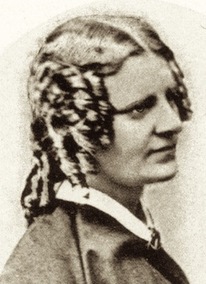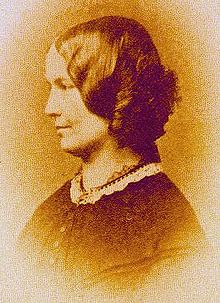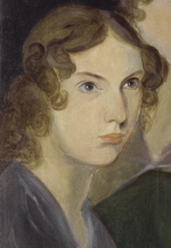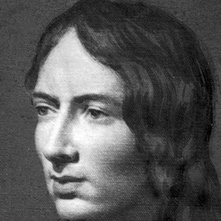 Anna Sewell was born on March 30, 1820, in Norfolk, England. Anna’s mother, Mary Wright Sewell, was a deeply devout Quaker, her religious beliefs and faith apparent throughout her career as a successful poet and author of popular evangelical children’s books. Anna’s kind and compassionate nature, as well as literary talent later in life, was undoubtedly inspired and nurtured by her mother’s own morals and values. During her early childhood, Anna was largely educated with her younger brother, Philip, at home; where she also helped extensively revise her mother’s works At 12 years old, Anna’s parents enrolled her in a formal school for the first time. Two years later, while on her way home from school, Anna accidentally slipped and fell, suffering a severe injury to both ankles. When she turned 16, Anna’s father, Isaac Phillip Sewell, took a job in the coastal town of Brighton, England and relocated the family, hoping the sea air and climate would help Anna recover. Unfortunately, Anna’s injury only worsened, likely due to inadequate medical treatments available during that time period. Anna eventually was unable to stand or walk on her own, becoming disabled for the rest of her life. Due to her difficulties with mobility, Anna started to use horse-drawn carriages more frequently, and could often be seen driving back and forth between her family home and the train station, dropping off and picking up her father from his work commutes. It was during this time that Anna further developed her love and respect for horses, becoming increasingly affected whenever she witnessed their mistreatment. A compassionate and gentle soul by nature, Anna’s concern regarding the ill treatment of horses further deepened when she read “Essay on Animals” by Horace Bushnell, pleading for the same sentiment. Having never married, with no children of her own, Anna spent many years of her adult life traveling across Europe with her mother, meeting creative types such as writers, philanthropists and artists along the way. Their collective influences, combined with Anna’s own personal interests and aspirations, lead her to follow her mother’s literary footsteps. In 1871, Anna began writing her first and only work, Black Beauty. During this time, Anna’s health deteriorated quickly, where she often required help from her mother to transcribe her words, too ill to write on her own. The book, a fictional autobiography chronicling the life of a gentle, high-bred horse, was narrated from the first-person’s perspective, giving readers an intimate glimpse into the animal’s thoughts and feelings. The story was innovative and the first of its literary genre, immediately turning the work into a tremendous success upon its publication in 1877. The author’s depiction of animal cruelty in Black Beauty resonated so greatly among readers, that it lead to many social reforms. The use of checkreins at the time -- straps used to hold horses’ heads up abnormally high, causing their necks great harm and pain -- was soon abolished in England. Across the Atlantic Ocean in the United States, anti-animal cruelty protests and demand for new animal rights legislation also grew significantly, with several states enacting laws to condemn those who inflicted abusive behaviors on animals. While Anna’s intention was never to become famous, she achieved her goal of educating and encouraging the public to treat horses with more kindness, understanding and empathy. Anna passed away in 1878, a mere five months after publishing Black Beauty. To this day, approximately 50 million copies have been sold worldwide, and it remains one of the best-selling literary works of all time, with various movie and television adaptations throughout the years. By Kim Tran  Born on April 21, 1816, in Yorkshire, England, Charlotte Bronte was the third among six Bronte children. Following the death of their mother, who passed from cancer in 1821, Charlotte and her siblings were primarily raised in a very strict and religious household by their father, Reverend Patrick Bronte, and their late mother’s sister, Elizabeth Branwell. In 1824, Charlotte was sent to the Clergy Daughters’ School at Cowan Bridge along with her two eldest sisters, Maria and Elizabeth, as well as her younger sister, Emily. While there, Charlotte suffered from progressively poor physical health due to the school’s harsh environment - her two elder sisters, unfortunately, did not survive the institution’s bitter cold and poor living conditions. Upon Maria and Elizabeth’s early deaths from tuberculosis, their father removed Charlotte and Emily from the school immediately. Upon Charlotte’s return home to Haworth with her family, she soon took over a more dominant, motherly role to her younger siblings as the oldest surviving Bronte sister. While the Bronte children rarely socialized outside of the home, likely due to their father’s wishes to protect their health, they shared strong bonds with one another through the creation of fictional worlds, chronicling elaborate, imagined lives and tales together. Charlotte and her younger brother, Branwell, were very close, collaborating on writing stories and even entire sagas for the inhabitants of their made up country of “Angria.” In 1831, at the age of 15, Charlotte enrolled at Roe Head to continue her education, where she later returned as a teacher from 1835 to 1838. In the following years, Charlotte went on to become a governess for several English families as a way to be financially independent and self-sufficient. After a failed attempt at opening up their own school, Charlotte self-financed a joint collection of poetry with her sisters as another way of helping them earn their own living. Acutely aware of the prejudice they would experience as female authors, the Bronte sisters took on masculine pseudonyms when sending manuscripts of their first novels to potential publishers. Under the assumed name of “Currer Bell,” Charlotte heavily relied on her own personal and professional experiences to write her second novel, Jane Eyre. It became an instant success upon its publication in 1847. Critics and celebrated authors lauded the novel as innovative and daring due to its first-person, feminine perspective and feminist views of society’s treatment of women at the time. While Charlotte eventually published other novels, they never achieved the same level of success or “shock factor” as Jane Eyre. Many attributed her inability to write due to her sisters and brother’s tragic deaths, one after the other, over the course of two short years. During this time, upon her publisher’s encouragement, Charlotte started to visit London where she revealed her true identity as a woman author, and moved around various literary circles. She never stayed away from home for too long, however, returning to Haworth to care for her aging father. Charlotte eventually married Arthur Bell Nicholls in 1854, after rejecting his initial proposal due to her father’s objection against Arthur’s poor financial status. The following year, she passed away while still pregnant with their unborn child. Her very first novel, The Professor, was published post-humously in 1857. The very same year, her friend and author, Elizabeth Gaskell, published The Life of Charlotte Bronte to honor the writer’s private life and literary legacy.  Yoon Joung Lee A British novelist and the youngest of the six children from the Bronte family, Anne Bronte, was born in 1820 in Yorkshire, England. Her mother, Maria Branwell, passed away with cancer when Anne was not even a year old and she was raised by her clergyman father, Reverend Patrick Bronte and religious aunt, Elizabeth Branwell. In 1825, she lost two of her sisters to tuberculosis. After the sisters’ unexpected deaths, the family's three remaining girls, Charlotte, Emily and Anne, were educated at home spending most of their time with family, rather than mixing with others from the community. The sisters individually started writing great novels during this period. In 1847, Anne published her first novel, Agnes Grey, based on her own experience as a governess for several families. Her two sisters also published their novels around that time. Charlotte Bronte’s Jane Eyre and Emily Bronte’s Wuthering Heights, were very successful after their releases. In 1848 shortly after her first novel, Anne published her second; The Tenant of Wildfell Hall, which reflected on women’s independence and portrayed the effects of alcoholism. The novel sold out within six weeks and became a big hit of the time. Before she fully enjoyed her successful literary career, she faced family tragedies including deaths of her brother, Branwell and her sister, Emily. In 1848, Anne’s brother died at the age of 31 by persistent drunkenness. Shortly after her brother’s death, Emily became ill and she died at the age of 30. Her sister Emily’s death significantly affected Anne whose health became weaker too. The following year in 1849, Anne died when she was only 29. She was buried in Scarborough. During her time, Anne was a less well-known writer among her sisters. However, her works have been re-evaluated by today’s critics and readers as the most radical work among her sisters’ and she is valued as a major literary figure of her time.  Yoon Joung Lee An English novelist and poet, Emily Bronte, was born in 1818 in Yorkshire, England to an Anglican minister as the fifth child of the six children. Her mother passed away from cancer when she was only three years old. In 1825, the Clergy Daughters’ School where her three older sisters attended was swept by a typhoid epidemic and Emily lost two of her sisters- Maria and Elizabeth to the illness as well as tuberculosis. After her two sisters’ deaths, her father and aunt, Elizabeth Branwell, educated the four Bronte siblings at home very strictly. Even though they didn’t have a formally ranked education or many social engagements with society, they met the world and society through access to various books and magazines. When she turned seventeen in 1835, Emily tried to attend a regular school, Roe Head girl’s school, where her sister, Charlotte was a teacher for three months, but she returned back to home in Haworth due to homesickness. In 1942, Emily and her sister Charlotte attended at the Pensionnat Heger in Belgium together to learn French, German and Music. There, nine of her French essays are still famous and the president of this academy, Constantin Heger, was also very impressed by her writings. Although the sisters enjoyed their studies and learned a lot from there, they had to come back to Haworth 9 months later due to the death of their aunt. The sisters wanted to establish their own school in Haworth one day. To gain experience, Emily became a teacher but she couldn’t do it long due to the extremely long hours of work. After she came back to her home, she focused on domestic chores especially taking care of her father and brother. In 1846, Emily and her two sisters published a collection of poems. They chose masculine names to avoid the prejudgment of female poets. In 1847, Emily published her well-known novel, Wuthering Heights, containing a powerful story of love, sorrow and death. The novel became a classic of English literature. With a severe alcohol problem and drug addictions, her brother died in 1948. Emily’s health got dramatically weakened after her brother’s funeral due to the harsh local climate. She also died three months after her brother’s death. |
Archives
July 2017
Categories
All
|
 RSS Feed
RSS Feed